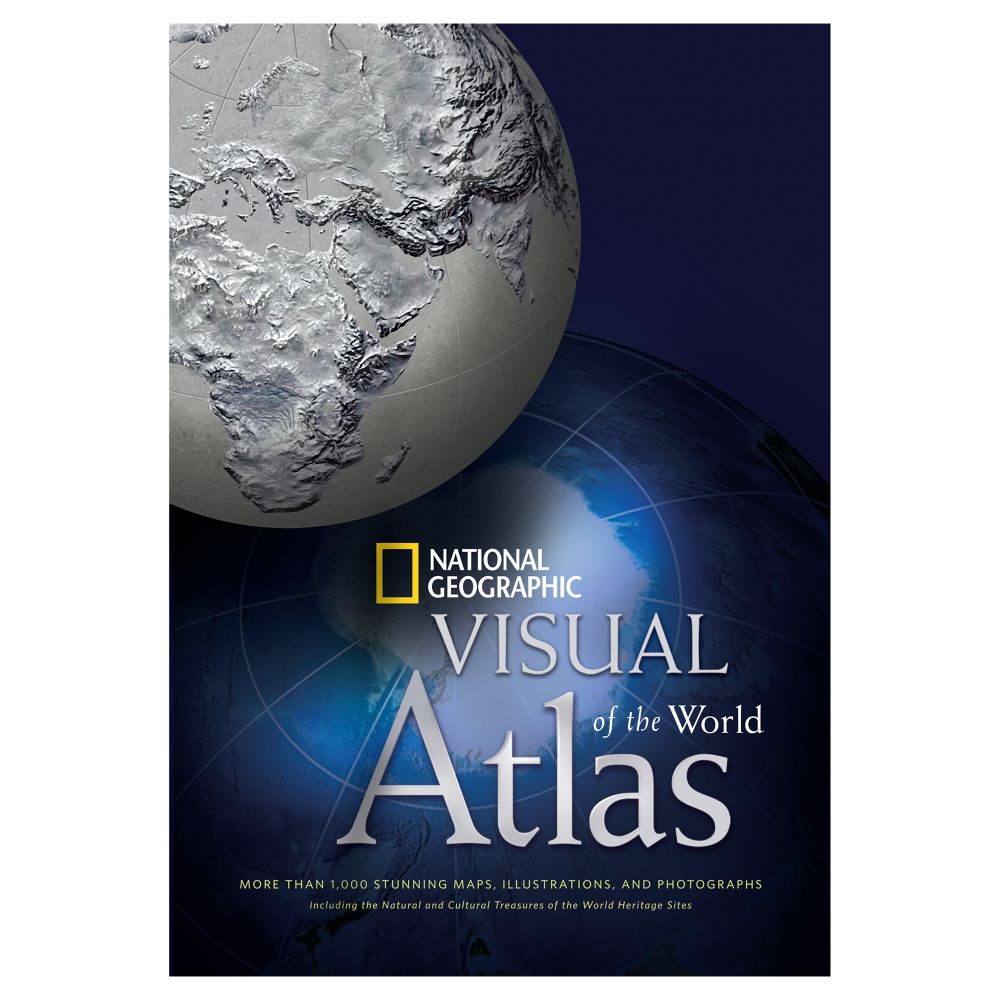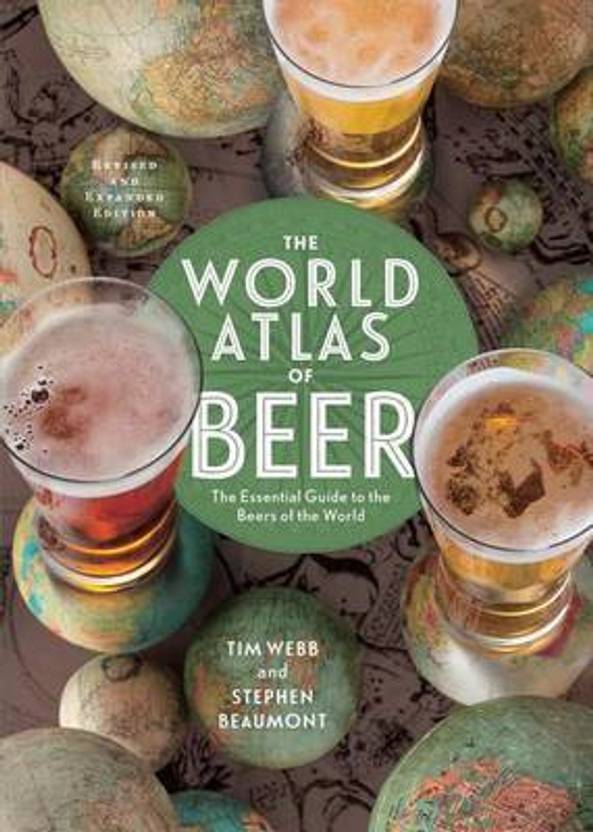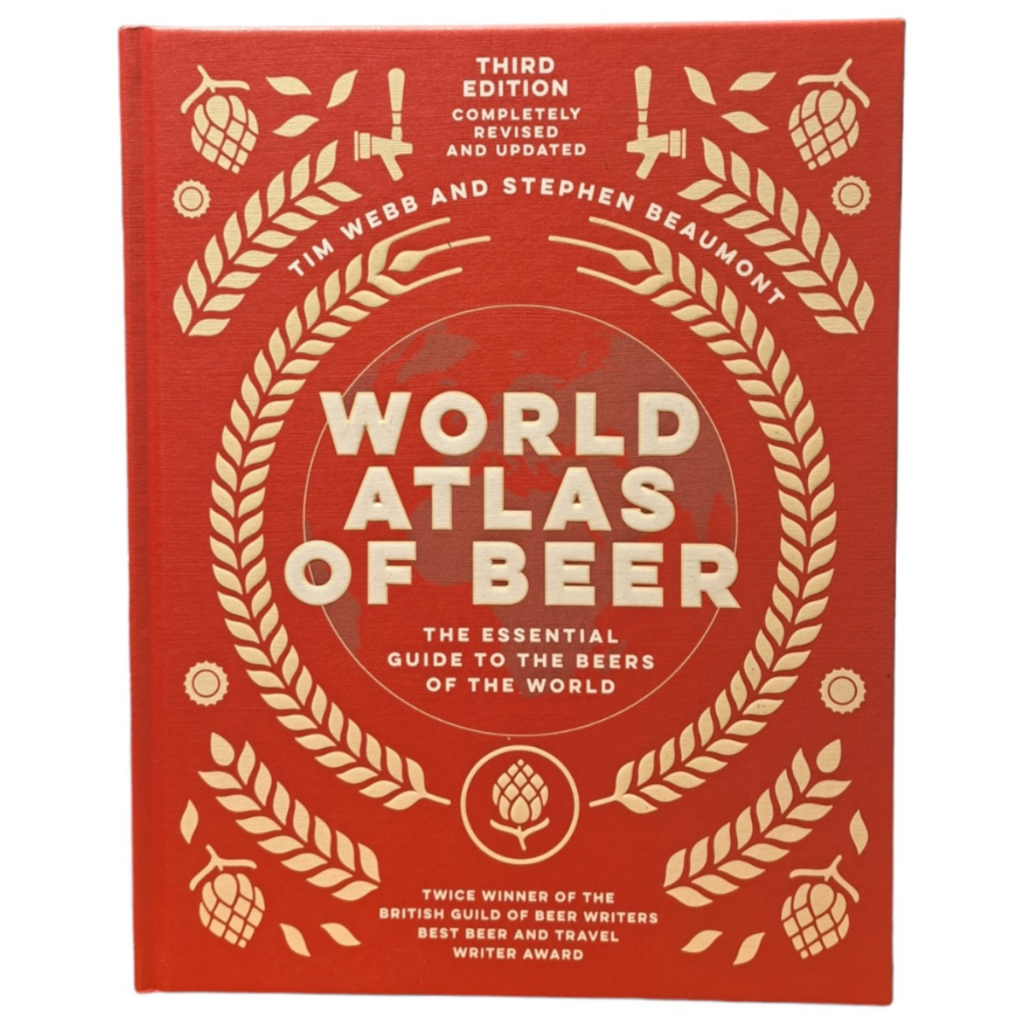Discover Pandipedia
Pandipedia is the world's first encyclopaedia of machine generated content approved by humans. You can contribute by simply searching and clicking/tapping on "Add To Pandipedia" in the answer you like. Learn More
Expand the world's knowledge as you search and help others. Go you!

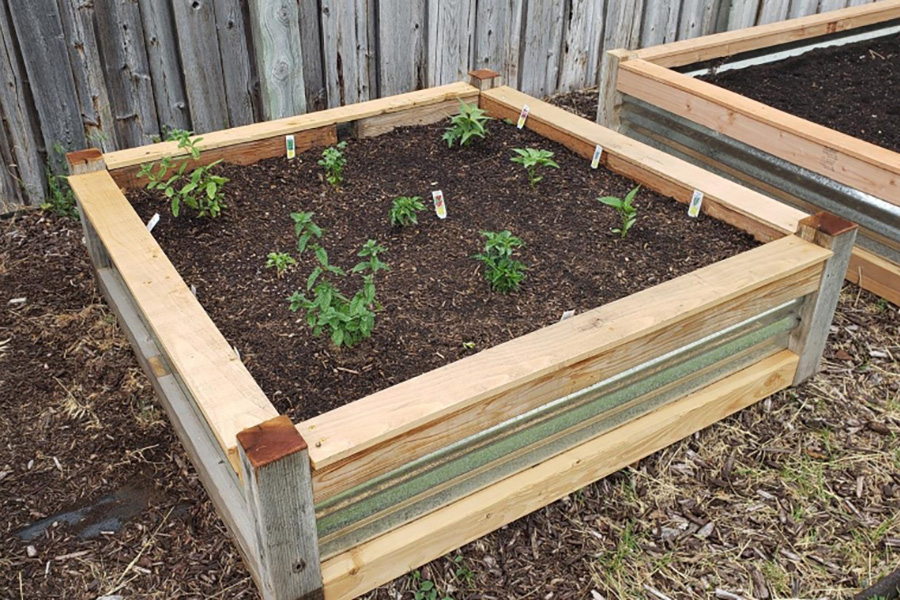



Let's look at alternatives:
- Modify the query.
- Start a new thread.
- Remove sources (if manually added).
- Request a manual search from our human research team.
According to the document, Kevin M. Murphy started teaching in 1983: 'I started teaching in 1983.'
Let's look at alternatives:
- Modify the query.
- Start a new thread.
- Remove sources (if manually added).
- Request a manual search from our human research team.
Get more accurate answers with Super Search, upload files, personalised discovery feed, save searches and contribute to the PandiPedia.

Photosynthesis powers plant life by converting light energy from the sun into chemical energy stored as glucose, which is used for growth and energy. During the process, plants take in carbon dioxide (CO₂) from the air and water (H₂O) from the soil, and, using sunlight, they transform these into glucose (C₆H₁₂O₆) and oxygen (O₂) as a by-product. Specifically, chlorophyll in chloroplasts captures sunlight and initiates this transformation, allowing plants to create their own food and release oxygen into the atmosphere[1][2][3][4].
Photosynthesis occurs primarily in two stages: light-dependent reactions and light-independent reactions (Calvin cycle). The light-dependent reactions require sunlight and take place in the thylakoid membranes of chloroplasts, converting light energy into chemical energy (ATP and NADPH). Then, during the light-independent reactions, this chemical energy is used to convert carbon dioxide into glucose[3][4].
Moreover, photosynthesis is crucial not only for individual plants but also for the entire ecosystem, forming the foundation of the food chain. Herbivores consume plants to obtain energy, while carnivores gain energy by eating herbivores, demonstrating the integral role of photosynthesis in sustaining life on Earth[3][4].
Let's look at alternatives:
- Modify the query.
- Start a new thread.
- Remove sources (if manually added).
- Request a manual search from our human research team.

Appetizers play a significant role in dining experiences by stimulating the appetite and setting the mood for the main course. They are more than mere pre-meal snacks; appetizers serve as a canvas for culinary creativity and social interaction. Below are some essential elements that contribute to a great appetizer.
Purpose and Importance

The primary aim of an appetizer is to whet the appetite for the main meal. According to the sources, appetizers can be small dishes or snacks served either as a precursor to the meal or as standalone offerings. They are vital because they 'set the tone for the meal, stimulate the appetite, and provide a variety of flavours and textures'[1][2]. Additionally, appetizers create opportunities for guests to socialize and enjoy a mix of flavors without the commitment of a full meal. They are especially effective during gatherings where guests may be consuming alcohol, as appetizers help to cut down on alcohol absorption[2].
Presentation and Visual Appeal

Visual aesthetics are crucial when preparing appetizers. A well-presented appetizer can enhance the overall dining experience. It is advised to arrange foods attractively on platters or in decorative bowls, using garnishments like fresh herbs or colorful ingredients to make them more appealing[4][5]. According to a source, 'the way you present your appetizers can make a big difference in how they are received,' emphasizing that thoughtful arrangements can elevate expectations and enjoyment[6].
Variety and Balance

A successful appetizer menu should offer variety in flavors, textures, and dietary options. Each gathering has unique preferences, so a good rule is to incorporate a range of appetizers, such as dips, savory bites, and cold options, ensuring that both vegetarian and meat-based options are included[2][3]. When selecting appetizers, consider popular choices from various cultures—like bruschetta or hummus—that can cater to different tastes[1][6]. An important aspect is to ensure that the appetizers are not too filling, leaving room for the main course[6].
Flavor and Ingredients
The flavor profile of an appetizer is paramount. It should be bold and tempting without overwhelming the palate. Great appetizers often combine contrasting flavors—sweet, salty, sour—while being not overly rich to distract from the main meal. Fresh and high-quality ingredients are also crucial; they significantly enhance the taste and overall appeal of the dish[3][6].
Serving Size
Serving sizes are another key element to consider. Appetizers should typically be designed for easy consumption—bite-sized portions that do not require utensils. Each guest should be offered about 2-3 bites of each appetizer, and it is advisable to plan for a variety of 3-4 different types of appetizers per gathering[2][4]. This approach not only stimulates interaction among guests but also accommodates a diversity of tastes and preferences.
Preparation and Timing
Preparation plays a vital role in hosting successful events. It is recommended to prepare as many items in advance as possible. This allows for a smoother hosting experience, as most of the work can be done before guests arrive, with last-minute touches like presentation and garnishing occurring just before serving[4][5]. Moreover, considering the time of day and season can influence what types of appetizers are most fitting; for example, lighter options are better for mid-afternoon gatherings, while hearty bites suit evening events[6][7].
Cultural Influences
Finally, drawing on cultural influences can enhance the uniqueness of an appetizer menu. Different cultures have their own traditional appetizers—such as Spanish tapas, Mediterranean meze, or Chinese dim sums—that can add an international flair to your gathering. Incorporating such elements not only educates guests about global cuisines but also elevates the dining experience[1][3].
In summary, a great appetizer should stimulate the appetite, showcase culinary skills, and create opportunities for guests to mingle. Through thoughtful preparation, balanced flavor profiles, eye-catching presentation, and cultural diversity, you can craft an appetizer experience that leaves a lasting impression on your guests.
Let's look at alternatives:
- Modify the query.
- Start a new thread.
- Remove sources (if manually added).
- Request a manual search from our human research team.

GSEs is kind of the Swiss army knife to the browser.
The Witness[1]
Browsers need a backstop. So if browsers have a choice, they're giving users a Swiss army knife.
The Witness[1]

You're drawing a conclusion from the big 1 model, that people are not using a Swiss army knife, that they're just using a knife.
MR. DINTZER[1]
Let's look at alternatives:
- Modify the query.
- Start a new thread.
- Remove sources (if manually added).
- Request a manual search from our human research team.
Let's look at alternatives:
- Modify the query.
- Start a new thread.
- Remove sources (if manually added).
- Request a manual search from our human research team.
Get more accurate answers with Super Search, upload files, personalised discovery feed, save searches and contribute to the PandiPedia.

Designing for emotion involves creating products and interfaces that intentionally evoke emotional responses from users to generate positive user experiences. This approach taps into users' visceral, behavioral, and reflective cognitive levels[1][2][3].
Visceral design refers to the user's immediate reaction to a design's aesthetics, which suggests how easy and satisfying it will be to use[2][3][4]. Behavioral design focuses on how well a product meets users' needs and how effortless it is to interact with[2]. Reflective design involves users' conscious evaluation of a product's performance and overall value after usage[1][2].
Elements of emotional design include:
Visual design: Utilizing color schemes, typography, and imagery to create personality and brand identity[3][4].
Usability: Ensuring products are intuitive and easy to navigate, reducing user frustration[3].
Functionality: Designing products that work well and meet user needs effectively[3].
Content: Crafting copy, images, and videos that resonate with users on a personal and emotional level[3][4].
Techniques to apply include creating a brand personality, engaging storytelling, and attention to detail in every design aspect to reinforce emotional connections[1][2][4]. Understanding and targeting specific user emotions can lead to increased engagement, loyalty, and satisfaction[1][5][6].
In conclusion, designing for emotion is about creating engaging, memorable, and user-friendly experiences by considering the emotional reactions of users and incorporating elements that appeal to their heart and mind[1][2][3][4][5][6].
Let's look at alternatives:
- Modify the query.
- Start a new thread.
- Remove sources (if manually added).
- Request a manual search from our human research team.
A History of the World in 500 Maps
This atlas features beautifully illustrated maps that provide informative historical context, making it a fascinating read for history buffs[1].
Great Maps: The World’s Masterpieces Explored and Explained
An engaging look at both ancient and modern maps, offering deep insights into the art and evolution of cartography[1].
History of the World Map by Map
This detailed atlas captures significant historical moments through well-crafted maps, combining charm with accuracy for history enthusiasts[1].
Atlas of the Civil War
Offers vivid maps and in-depth battle descriptions, ideal for anyone passionate about Civil War history[1].
National Geographic World Atlas
A comprehensive atlas featuring high-quality maps and stunning visuals, perfect for those who love exploring historical geography[1].

British History Online
A digital library of primary and secondary sources for studying British and Irish history, focusing on the period 1300 to 1800, which can aid in historical research[2].
David Rumsey Map Collection
A rich collection offering access to over 150,000 maps spanning from ancient to modern times, perfect for researchers and history lovers[7].
British History Online Premium
Provides access to an additional 200 volumes of key research materials and page scans for history exploration[2].
Groundsure’s Historical Maps
High-resolution digitized historical maps in the UK, scanned at over 500 DPI, ensuring clarity and detail for historical research[10].

Maps by Aleksandra and Daniel Mizielinska
Beautifully illustrated, this book offers a captivating visual presentation of maps filled with interesting facts, enjoyable for both children and adults alike[1].
The National Geographic Concise Atlas
A nice balance of educational content and visuals, making it accessible for all ages interested in geography[1].
The National Geographic Visual Atlas of the World
A heavy yet stunning atlas that combines detailed maps with breathtaking photography of cultural sites[1].
The Times Desktop Atlas of the World
An informative, compact atlas ideal for quick reference on a desk, featuring clear and detailed maps[1].
The World Atlas of Wine
A visually appealing atlas about wine regions globally, featuring maps and information about production techniques[1].
World Atlas Sticker Book
An interactive atlas for younger audiences that includes sticker activities promoting hands-on learning about geography[1].
The Women’s Atlas
Engaging visual presentations of women's issues around the world, this atlas offers deep insights and educates readers[1].
The World Atlas of Beer
A visual guide that captures the diversity of beers around the globe, making it suitable for both casual readers and enthusiasts[1].
History Education in the Digital Age
Explores how digital and multimedia resources can enhance historical thinking, valuable for educators[8].
Interactive Historical Maps
These dynamic maps help students visualize and understand historical transformations and their implications[8].
Historical Maps from the Library of Congress
A treasure trove of historical maps covering various periods and regions, perfect for both research and education[4].
Let's look at alternatives:
- Modify the query.
- Start a new thread.
- Remove sources (if manually added).
- Request a manual search from our human research team.
The Unique Properties of Water Essential for Life

Water is often referred to as the 'mother liquid' of life, and its biological significance stems from a range of unique properties that make it indispensable for living organisms. These properties directly contribute to the basic functions necessary for survival and the complexity of life forms.
Polarity and Solvent Abilities
One of water's most critical characteristics is its polarity, which leads to its exceptional ability as a solvent. The water molecule consists of two hydrogen atoms bonded to one oxygen atom, and this configuration creates a polarity where the hydrogen side is positively charged and the oxygen side is negatively charged. This polarity allows water to dissolve a wide variety of substances, enabling it to carry essential ions and nutrients throughout biological systems. As stated, 'water is this wonderful universal solvent,' meaning almost every substance can dissolve in water, which makes it an effective medium for cellular transport and biochemical reactions[2].
High Heat Capacity and Regulation of Temperature
Another vital property of water is its high heat capacity. Water can absorb significant amounts of heat without a corresponding large increase in temperature. This quality allows organisms to maintain stable internal temperatures despite external temperature fluctuations. The ability of water to stay liquid over a broad range of temperatures significantly contributes to the stability of ecosystems and supports diverse habitats. As noted, 'water prevents the effects of temperature fluctuations in the surroundings'[1].
Cohesion and Adhesion

Water's unique hydrogen bonding leads to high cohesion, the attractive force between like molecules. This property is vital for creating surface tension, allowing certain organisms, like water striders, to walk on water without breaking the surface. Cohesion is crucial for the movement of water through plant xylem, helping transport water from roots to leaves. Water also demonstrates adhesion, the attraction between water molecules and different substances, facilitating processes like capillary action, which helps draw water upwards in plants[3].
Density and Ice Formation
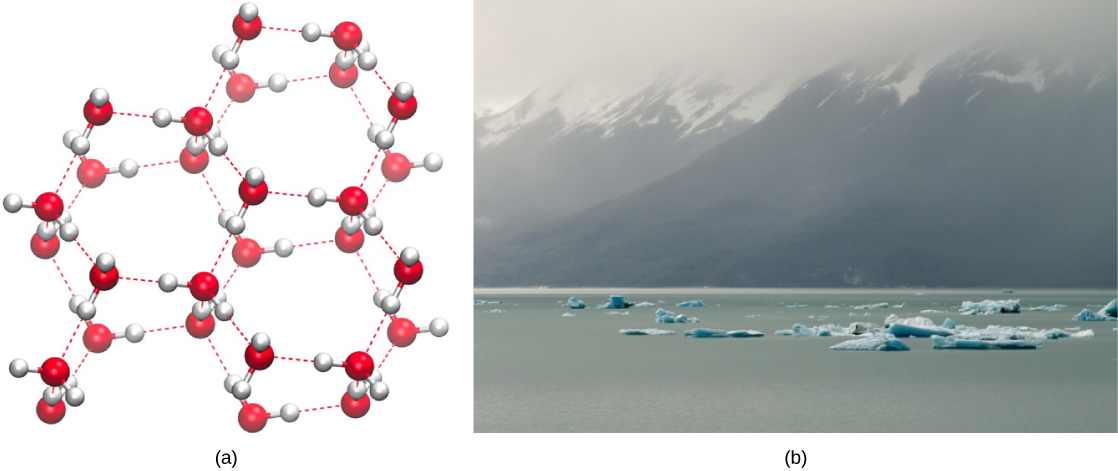
Water is unique in that it is less dense in its solid state than in its liquid state. This means that ice floats on liquid water, forming an insulating layer on bodies of water in winter, which protects aquatic life from extreme cold. The phenomenon that 'if water shrinks during freezing, the ice will sink... and will destroy the aquatic life in Polar Regions' highlights the importance of water's density for maintaining ecosystems[1]. The crystalline structure of ice, maintained by hydrogen bonds, creates an effective insulator, allowing life to thrive beneath the surface even in freezing temperatures.
Role in Biological Reactions
Water is not merely a passive medium but actively participates in various biological reactions. It acts as a reactant in processes such as hydrolysis, where it helps break down complex molecules into simpler ones necessary for metabolism. Additionally, during photosynthesis, oxygen is released by the hydrolysis of water[1]. The presence of water also assists in creating buffers which help maintain an essential pH level for biochemical processes, contributing to the overall homeostasis of living organisms[3].
Support for Life Systems and Organism Functionality
In living systems, approximately 70-90% of a cell's composition is water, emphasizing its crucial role in supporting cellular structure and function[1]. Water is involved in regulating osmotic pressure, sustaining cell turgidity, and providing a medium for nutrient transport, as it enables the diffusion of molecules within cells[1]. Furthermore, the lymphatic and excretory systems in animals utilize water to facilitate transport and waste removal, showing how integral water is to bodily functions.
Conclusion
In summary, the unique properties of water—its polarity, high heat capacity, moisture retention abilities, cohesive and adhesive qualities, density anomaly, and active participation in biological reactions—collectively make it an essential component of life on Earth. The interplay of these properties not only sustains individual organisms but also supports entire ecosystems, exemplifying why water is often hailed as the foundation of life. Understanding water's critical roles enhances our appreciation for this vital resource and its importance in the quest for life beyond our planet[2][3].
Let's look at alternatives:
- Modify the query.
- Start a new thread.
- Remove sources (if manually added).
- Request a manual search from our human research team.
Effective time management is essential for enhancing productivity and achieving personal and professional goals. Numerous principles guide individuals to organize their tasks, prioritize their responsibilities, and maintain a balance between work and personal life. Below, we explore the key principles of time management drawn from various sources.
The Importance of Planning

Planning is the cornerstone of effective time management. It involves identifying tasks and organizing them into a coherent schedule. As explained, 'Planning requires you to work out and write down everything that you need to get done'[1]. This could involve creating to-do lists or utilizing digital tools such as Trello to visualize tasks. Proper planning allows individuals to focus on what needs to be done rather than getting overwhelmed by details.
Additionally, effective planning enhances clarity and focus, helping individuals to avoid distractions. It is vital to “think of your day in terms of time, not the tasks you have to do'[9]. This approach enables one to allocate specific time slots to significant tasks, fostering a more organized and productive daily routine.
Setting Priorities

Prioritization is crucial in ensuring that time is spent on tasks that yield the most significant results. According to the Eisenhower Matrix, tasks can be categorized into four quadrants based on their urgency and importance: urgent and important, important but not urgent, urgent but not important, and neither urgent nor important[5]. By classifying tasks this way, individuals can strategically decide which responsibilities to tackle first, allowing them to focus on what truly matters.
A common guideline suggests that 'efficient resource allocation involves focusing on the key objectives'[8], ensuring that efforts are channeled towards high-impact activities. This principle also helps mitigate overwhelm by clarifying which tasks should be completed immediately and which can be deferred or delegated.
Scheduling Tasks

Proper scheduling is the next step after planning and prioritizing. It involves committing to specific time slots for each task, effectively blocking out time in one’s calendar. Scheduling should be flexible enough to accommodate unexpected tasks while maintaining a structure to ensure accountability. “Each task should have its own unique timebox that lasts no more than three hours”[4] to facilitate focused work sessions.
Using a combination of scheduling methods, such as time blocking and the Pomodoro Technique, can enhance concentration and allow for regular breaks, which are essential for maintaining productivity[6][7]. Such methods counteract the chaotic nature of daily work and help individuals create clear boundaries between various responsibilities.
Staying Organized

Organization is integral to effective time management. This involves determining the necessary tools, resources, and support systems required for efficient task completion. Techniques like maintaining a clean workspace and using task management apps help streamline processes[7].
Moreover, regular reviews of shared responsibilities can aid in identifying which tasks can be delegated, thus allowing team members to focus on their strengths. “Delegating tasks to others is a valuable strategy for improving time management and boosting productivity”[2]. By ensuring that individuals are working on tasks they excel at, organizations can enhance overall efficiency.
Embracing Discipline and Avoiding Distractions

Discipline is fundamental in adhering to a time management system. “A lot of people fail when it comes to time management because they are not disciplined enough with sticking to their system'[1]. Cultivating a strong sense of commitment to one’s planned schedule can lead to increased consistency and improved time use.
Additionally, avoiding distractions is critical for maintaining focus. “Distractions take away from the time you should be working”[7]. Setting boundaries around communication, silencing notifications, and creating a conducive work environment are all strategies that can foster higher productivity levels.
The Role of Self-Care

Lastly, prioritizing personal well-being is a vital yet often overlooked component of effective time management. “Make time for enjoyable, rejuvenating, and satisfying activities”[9]. Incorporating self-care routines into one’s schedule can reduce stress, increase motivation, and facilitate better performance at work. When individuals manage their stress levels and engage in enjoyable activities, they can return to their tasks with renewed energy and focus.
Conclusion
Incorporating these principles of time management can significantly enhance productivity, reduce stress, and create a more balanced life. By focusing on planning, prioritizing, scheduling, staying organized, embracing discipline, and maintaining self-care, individuals can not only manage their time more effectively but also achieve their broader goals with greater ease. Time management should thus be viewed as an ongoing process of improvement, requiring regular reassessment and adaptation to meet evolving challenges and priorities.
Let's look at alternatives:
- Modify the query.
- Start a new thread.
- Remove sources (if manually added).
- Request a manual search from our human research team.









:max_bytes(150000):strip_icc():format(webp)/GettyImages-14140279091-5746d98042454d22857345bfe045960f.jpg)












:max_bytes(150000):strip_icc()/front-door-color-meanings-paint-colors-sherwin-williams-wall-and-trim-combinations-bedroom-ideas-interior-gallery-colour-painting-designs-pictures-doors-purple-for-the-home-pinterest-5bfb05e1c9e77c00514f8d53.jpg)





:max_bytes(150000):strip_icc():format(webp)/FauxMantle-31-f47b188da7c4439c9c044cc345e77e58-f0b78f8b2e4444e9bb3f6f9b61a0ca58.jpeg)

:max_bytes(150000):strip_icc():format(webp)/organize-2136d078b72c4fbdae947e3dbed865b0.jpg)
:max_bytes(150000):strip_icc():format(webp)/DIYRoundCoffeeTable7-0433be5479cc45798f7507e0dd188b78.jpg)




















